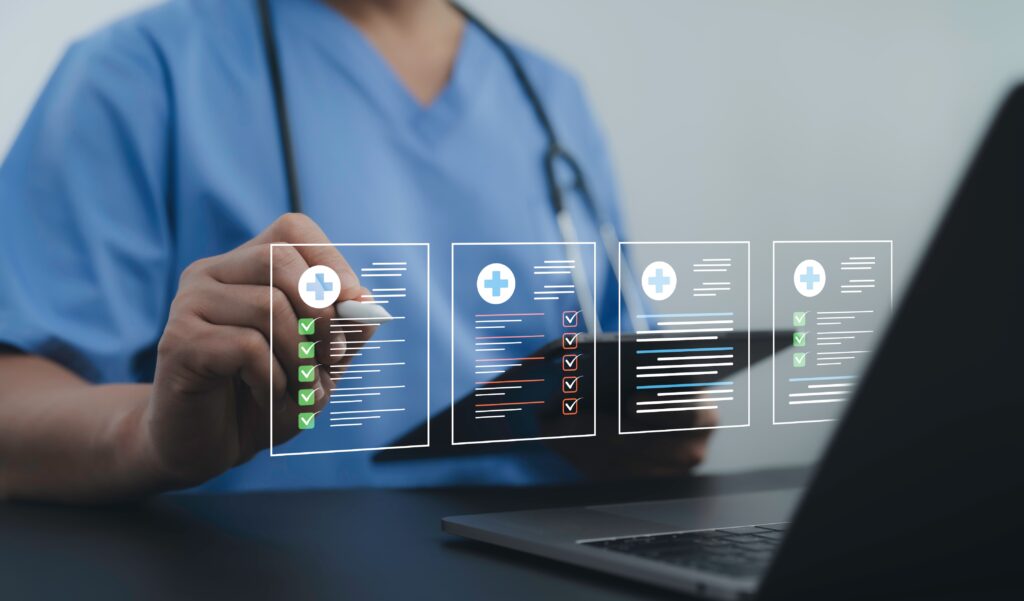
Modern healthcare faces growing pressure to deliver better care while cutting costs. As medical needs rise and patient expectations shift, healthcare providers must find smarter ways to work. This is where digital infrastructure comes into play. By using the right technology, hospitals and clinics can save time, reduce errors, and improve both patient and staff experiences.
Let’s explore how digital tools support smoother operations in healthcare settings.
1. Faster Access to Patient Information
One of the biggest benefits of digital infrastructure is easy access to patient records. Electronic health records (EHRs) allow doctors and nurses to pull up a patient’s history, test results, and medications in just a few clicks.
Before EHRs, staff had to dig through paper files or wait for faxes. That process was slow and could lead to missed details. Now, with digital systems, providers can make faster and more informed decisions. This saves time during appointments and cuts down on repeat testing.
For example, if a patient arrives at the emergency room, the doctor can instantly check for allergies or past surgeries using the EHR—no phone calls or delays needed.
2. Streamlined Administrative Tasks
Hospitals handle a huge amount of paperwork. Scheduling appointments, billing, coding, and updating charts used to take hours. Digital systems reduce the need for manual data entry and make these tasks more efficient.
Appointment scheduling platforms, for instance, help staff coordinate visits and send reminders to patients. Billing systems now automatically capture codes for insurance claims, reducing the chance of mistakes. These small changes lead to big savings in time and effort.
By freeing up staff from routine paperwork, healthcare facilities can focus more on patient care.
3. Better Communication Between Departments
Clear communication between different teams is essential in healthcare. When departments work in silos, mistakes can happen—like patients being sent to the wrong room or medications being delayed.
Digital infrastructure helps connect everyone. Messaging platforms and shared dashboards let teams see real-time updates. If lab results are ready, the system notifies the doctor immediately. If a patient is moved, nurses and transport staff are alerted.
This kind of coordination reduces confusion and ensures patients get what they need on time.
4. Improved Inventory and Supply Chain Management
Running out of medical supplies can affect patient care. On the other hand, ordering too much wastes money and space. Digital inventory systems help hospitals keep track of what they have, what’s being used, and what needs to be ordered.
These tools also predict demand based on usage trends. For example, during flu season, the system may suggest stocking more vaccines and antiviral medications.
Another effective strategy is to partner with providers of digital health devices that offer built-in tracking and data-sharing features. These partnerships make it easier to monitor usage in real time, automate reordering, and keep critical items stocked without delays. This kind of planning ensures that resources are used wisely and that care isn’t delayed because something ran out.
5. Enhanced Staff Scheduling and Workforce Management
Healthcare runs 24/7, and managing staff shifts can be complex. Digital scheduling tools help create fair and efficient work schedules. These tools consider factors like staff availability, skills, and patient needs.
For instance, if more nurses are needed in the ICU during peak times, the system can flag this in advance. It also helps reduce burnout by avoiding overbooking or uneven shift assignments.
By making scheduling more accurate, healthcare providers can maintain safer staffing levels and better morale among employees.
6. Quicker Diagnosis Through AI and Data Analysis
Some digital tools go beyond just storing information—they help analyze it, too. Artificial intelligence (AI) and machine learning can sift through large sets of patient data to find patterns that humans might miss.
For example, AI can highlight early signs of disease in imaging scans, which speeds up diagnosis. Predictive models can also flag high-risk patients so doctors can take action sooner.
While AI doesn’t replace medical judgment, it supports doctors by giving them valuable insights more quickly.
7. Telehealth and Remote Monitoring
Telehealth has grown rapidly in recent years, and it’s made high-quality care more accessible. With video visits and remote check-ins, patients can talk to doctors without traveling to a clinic.
This setup reduces wait times and helps providers serve more people in less time. Digital tools also allow for remote monitoring of patients with chronic conditions. Devices can track blood pressure, glucose levels, or heart rates and send updates to the doctor.
These systems catch problems early, often before a patient even feels symptoms. That keeps small issues from becoming serious emergencies.
8. Reduced Errors and Better Compliance
Manual processes leave room for mistakes. A missed decimal in a dosage or a wrong patient name can lead to serious harm. Digital systems help catch errors before they happen.
Medication management software checks for drug interactions or allergies. Electronic checklists guide providers through procedures and ensure steps aren’t skipped. Systems also log actions automatically, helping with audits and legal compliance.
Not only do these systems protect patients, but they also help hospitals meet safety and regulatory standards and reduce legal risks.
9. Easier Data Sharing with External Providers
Patients often visit multiple facilities, like specialists or labs outside their main hospital. Digital infrastructure allows for easier sharing of data across these locations.
Health information exchanges (HIEs) let different systems talk to each other securely. This prevents the need for repeated tests and makes sure that every provider has the full picture.
When data flows smoothly across systems, the patient experience improves—and so does the quality of care.
10. Stronger Security and Data Protection
With so much sensitive information involved, healthcare organizations must also focus on protecting data. Digital systems now come with built-in tools for encryption, access control, and monitoring.

Security software tracks who accesses which files, adding a layer of accountability. Multi-factor authentication and regular system updates help prevent cyberattacks.
While no system is perfect, strong digital infrastructure gives healthcare providers better tools to defend against data breaches.
Conclusion
Digital infrastructure is not just a convenience—it’s becoming a necessity for healthcare providers who want to run more efficiently. From faster access to records to safer patient care, the benefits are clear. Every system, from scheduling tools to data-sharing platforms, plays a role in supporting both patients and medical staff. When technology is used thoughtfully, it creates smoother workflows, cuts down on errors, and opens the door to better outcomes. As the needs of the healthcare system continue to grow, digital tools will remain central to meeting them.
 Best Free HTML5 Bootstrap Themes
Best Free HTML5 Bootstrap Themes
